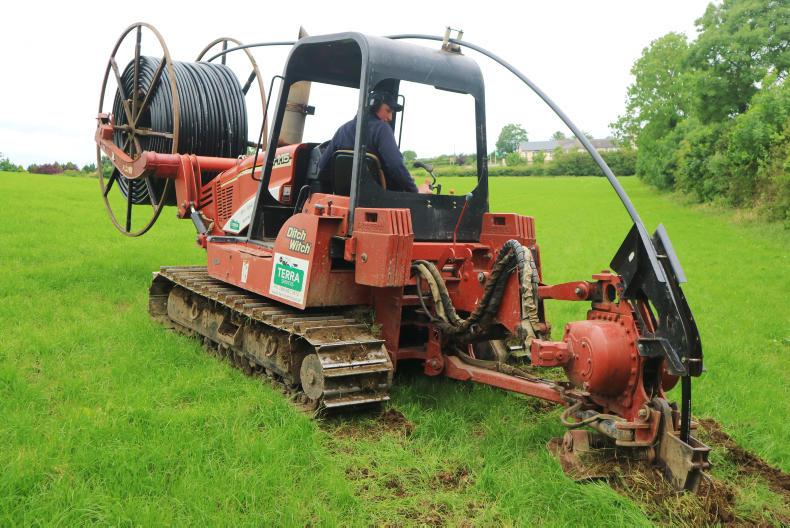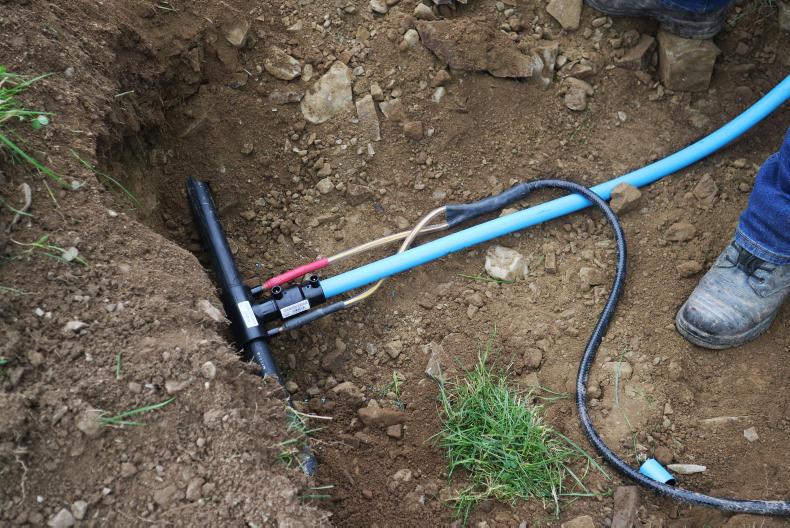Oisin Duffy from Muff, Co Louth, worked in Cantebury, New Zealand, on dairy farms for two years. He formed a partnership with his father Niall and started dairying on a greenfield site in 2012 where they used to run a beef enterprise.
Through leasing, the farm has been expanded to 70ha and they now milk 180 cows. They built a new 24-unit parlour on the farm and installed a new water system.
Oisin’s plan was to set up a low-cost grass-based system, similar to the systems he worked on in Cantebury.
The first year they started milking he was finding it difficult to supply cows with minerals.
“I was putting out licks and putting it through the meal but it was hard to know which cows were using them and if they were getting enough,” explained Oisin.
Because options were limited, they were forced to feed more meal throughout the year to make sure cows were getting enough minerals.
Mineral injection system
The Duffys decided to install a Terra Liquid Minerals mineral injection system, which mixes minerals through the water system automatically every day.
Oisin said the installation has helped him make the low-cost system successful because it reduced the dependence on concentrates.
Now the Duffys feed less than 500kg of concentrates annually and meal feeding usually ends once breeding time is over. Oisin said because there was a good mineral source in the water, soya hulls was an adequate feed.
How it works
On the Duffy farm, the main supply of water comes from a well. They also have a council supply they can fall back on.
The graphic shows how the system works. Water from the well flows through the plate cooler where milk is cooled before it enters the bulk storage tank.
After the water passes through the plate cooler it enters a 10,000 litre plastic water storage tank. The tank is outside the dairy.

A pump inside is used to pump water from this tank to troughs in the winter accommodation and to troughs in the paddocks. Another pump is used to supply water for washing down the parlour.
Tom Hennessy from Terra Liquid Minerals said they always install two separate pumps on farms.
This is because cows will drink most after milking, which is also the time farmers are washing down the parlour.
He said if there was only one pump farmers might decide to switch off the supply to the paddocks to increase the pressure for washing the parlour but easily forget to turn on the parlour supply again.
Water meter
After the pump the injection system is connected to the water supply and this is regulated by a water meter. The water meter is connected to the Terra controller.
This monitors the Duffy herd water intake and can compensate dosing to ensure accurate daily delivery.
Magnesium and minerals are injected separately. This is because higher volumes of magnesium are used in the spring.
“That magnesium might have to be filled once a month while the minerals could last for two to three months,” said Oisin.
Tom said you can alter the herd numbers or dosage settings in the Terra Controller at any time.

He said this is a good way of eliminating wastage and ensuring accurate mineral delivery at all times. According to Oisin, Terra Liquid Minerals delivery drivers monitor and refill minerals as needed.
When your minerals are running low, the system sends an alert to Terra to replenish stock so the farmer won’t run out.

Benefits
Tom claims there are a number of benefits to installing a mineral injection system on a farm which include:
Oisin said he noticed a difference straight away when he installed the system. “The cows’ coats were shinier, milk yield went up, there were very few problems at calving, and calves seemed healthier” he said.
Water system
Terra services also set up the water system on the Duffys’ farm. They use a special mole plough to bury the pipe work 2.5ft in the ground.
Last week, when the Irish Farmers Journal called to the farm, the system was being extended to reach more paddocks. All the piping is MDPE heavy duty and 40mm diameter. The mole plough was very quick laying the pipe work and a large reel at the front of the plough automatically fed the pipe into the ground.

The mole plough is constantly vibrating which helps it move through the soil quickly. No big stones came up during the installation and there wasn’t much disturbance to the ground. When the machine tracked back over the trench, any loose material settled back nicely. This drumlin-type ground was perfect for the mole plough, it might not be as suitable in stonier fields, you would imagine.
The arm of the plough can move left and right so that pipe can be buried tight to a ditch if needs be. Interestingly, electro fusion joints were used instead of standard joiners. Tom says they are used to ensure there are no leakages in the system.
“The electro fusion joints are used in the gas industry worldwide, guaranteeing no liquids are released through the joints,” Tom explained.

To fit these piping is pushed into the joiner, the system uses electrical currents to melt the joiner and pipe together making it one solid unit.
It takes 44 seconds to heat the copper inside the joiner and approximately 10 minutes for it to cool.
Usually the Terra services team will fit all the joiners to service water troughs first.
When all the joints are set, the water will be turned on to ensure there are no leaks. Once they have established there are no leaks, the joiners are buried too.
Cost
All prices are excluding VAT.
In pictures: preventing contamination in a new well
Increased water demand puts water and septic tanks under pressure
